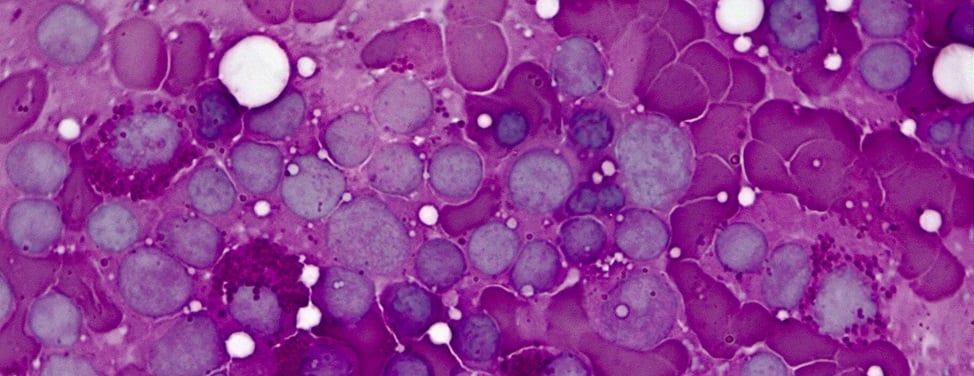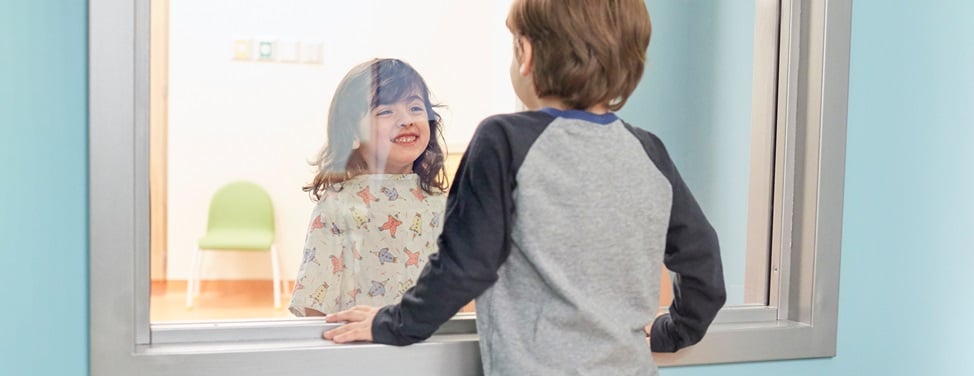During the "countdown period," usually five to 10 days before the transplant, a conditioning regimen is administered. The drugs, or chemotherapy, and/or radiation that are used vary with the underlying disease. Some children with severe immunodeficiencies may not require any chemotherapy or radiation.
The overall goals of the conditioning regimen are to:
- Suppress the immune system so that the patient will not reject the new bone marrow
- Make room in the bone marrow for the donor marrow stem cells to grow
- Destroy any residual cancer cells
Chemotherapy Agents
There are various chemotherapy agents that your child may receive in preparation for a bone marrow transplant. Not all of the potential side effects may occur and the negative side effects vary greatly from patient to patient.
It is important to know that most of the drugs used in the conditioning regimen contribute to the following negative side effects:
- Nausea and Vomiting
- Hair loss
- Organ damage, in particular to the liver and kidney
- Risk of infertility, short stature, developmental delay, abnormal teeth and another cancer
Your child's doctor will go over all of the early and late side effects with you and explain which are most frequent as well as and those that are rare.
ATG (Anti-Thymocyte Globulin) |
|
What it does: |
Decreases the body's ability to reject new bone marrow. May also be used to treat graft vs. host disease. Made in horses or rabbits. |
How it is given: |
Administered IV over 4-10 hours. The recipient will be pre-medicated with Tylenol, Benadryl, and Decadron to help prevent reactions. |
Potential side effects: |
|
BCNU (Carmustine) |
|
What it does: |
Destroys cancer cells. |
How it is given: |
IV. |
Potential side effects: |
|
Busulfan |
|
What it does: |
Destroys cancer cells and/or makes room for new bone marrow to grow. |
How it is given: |
Taken by mouth or through a tube which is inserted through the nose into the stomach. A new preparation is now available which is injected intravenously. |
Potential side effects: |
|
Carboplatin (CBDCA) |
|
What it does: |
Destroys cancer cells and makes room for new bone marrow to grow. |
How is it given: |
IV (sometimes as a continuous infusion). |
Potential side effects: |
|
Cyclosporin A |
|
What it does: |
Helps prevent and/or treat Graft vs. Host disease. |
How is it given: |
While in the transplant unit is it given IV. When beginning the process of discharge it is changed to an oral medicine. |
Potential side effects: |
|
Cytoxan (Cyclophosphamide) |
|
What it does: |
Destroys cancer cells and/or prevents the transplanted marrow from being rejected by the recipient. |
How it is given: |
Administered IV. Additional IV fluids are started the night before the 1st dose and continued for 24 hours after the last dose to minimize irritation of the bladder or kidneys. Also, a drug called Mesna is given to help minimize irritation to the bladder. |
Potential side effects: |
|
Etoposide (VP-16) |
|
What it does: |
Destroys cancer cells. |
How is it given: |
Administered IV either as a continuous infusion or as a single dose once or twice a day. |
Potential side effects: |
|
Fludarabine |
|
What it does: |
Destroys cancer cells and prevents rejection by destroying T cell immunity. |
How is it given: |
Administered IV as a single dose once a day. |
Potential side effects: |
|
GM-CSF OR G-CSF (Neupogen) |
|
What it does: |
Stimulates bone marrow cells to grow and mature into neutrophils and causes some stem cells in the bone marrow to temporarily move into the circulating blood. |
How is it given: |
Administered intravenously or subcutaneously (under the skin). |
Potential side effects: |
|
Melphalan |
|
What it does: |
Destroys cancer cells. |
How is it given: |
Administered IV. Additional IV fluids are started the night before the 1st dose and continued for 24 hours after the last dose to minimize irritation of the bladder or kidneys. |
Potential side effects: |
|
Methotrexate |
|
What it does: |
Destroys cancer cells and/or helps prevent graft vs. host disease. |
How is it given: |
Administered IV over a few minutes. It is given post-transplant on days 1, 3, 6, and 11. In addition, some children will get methotrexate weekly for the first 100 days post transplant. |
Potential side effects: |
|
Tacrolimus (FK506) |
|
What it does: |
Helps prevent and/or treat graft vs. host disease. Used for patients who have not responded to or are unable to take cyclosporin A. |
How is it given: |
IV or by mouth. |
Potential side effects: |
|
Thiotepa |
|
What it does: |
Destroys cancer cells. |
How is it given: |
Administered IV. |
Potential side effects: |
|
Topotecan |
|
What it does: |
Destroys cancer cells. |
How is it given: |
Administered IV. |
Potential side effects: |
|
Total Body Irradiation
The purpose of radiation therapy is to destroy residual cancer cells and/or further depress the immune system to improve acceptance of the new bone marrow. The radiation is given to the entire body, called total body irradiation (TBI). The total dose of radiation usually is given over several days just prior to transplant in the Radiation Oncology Department. Typically the patient receives a total of 1200 to 1300 centigray (dose of radiation) given over three to four days. The daily dose is split in two so that the patient will make two trips to the Radiation Oncology Department each day.
All doctors, nurses and technicians take isolation precautions. The patient wears a mask when out of the BMT room and is covered as much as possible. Each radiation treatment will take approximately 20 to 30 minutes to administer. It takes some additional time to adjust the patient in just the right position so that the proper dose of radiation is administered. Some children may need to be sedated so they can hold still throughout the procedure. For young children, a general anesthetic will be administered so that the child is asleep during the radiation treatment. Only the child can be in the room during the treatment. There is a TV camera and intercom so everyone can watch and talk to the child.
The immediate side effects of radiation therapy, which occur within the first few hours and days, may include diarrhea, nausea, vomiting and tiredness. Mouth sores also can be a problem due to the combination effect of chemotherapy and radiation. Many children complain of a dryness of the mouth, sore throat and thickened saliva. Starting several days after radiation therapy, hair loss, sunburning and dryness of the skin may be experienced. Much rarer side effects include swelling (like mumps) of the glands in the cheeks and fever. Radiation therapy also destroys the cells of the bone marrow and, most importantly, cancer cells.
Potential long-term effects of chemotherapy and radiation, which will be discussed by your child's doctors, include cataracts (clouding of the lens in the eye), delayed growth and development, sterility and the possible development of a second cancer.








































